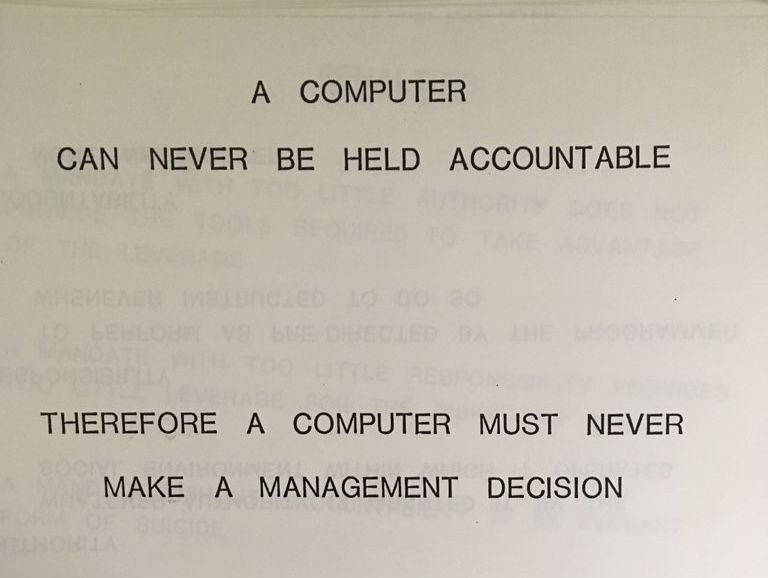No one knows how work works
Attributed to Patrick S Tomlinson:
1960’s Futurists: Automation will free mankind from meaningless tedium to focus on creative pursuits only human beings can master.
2020’s Techbros: We’re building AI to write all your books, music, and TV so you can focus on the meaningless tedium of your cubicle job.
Cost of development
On the excellent Oddly Influenced podcast, Brian Marick was talking to Glenn Vanderburg about engineering.
My big take-away was engineers build models to simulate real materials or situations because it’s cheaper and less risky than building the real thing at 1:1 scale and getting it wrong.
In software (UX) we create and test prototypes because it’s cheaper than getting real people to use the real thing and finding out it’s wrong.
Audi played with an AI to make new wheel designs. Steve DaSilva at Jalopnik is not impressed.
it seems Audi has developed a high-tech system that takes existing wheels and fucks ’em up a little, then sends them off to actual car designers to fix.
Michael Hobbes, on the bird site:
I think we’ll look back on the last decade as a time when social media gave previously marginalized groups the ability to speak directly to elites and, as a result, elites lost their minds.
5 steps to making better cities just getting better
Every city in the world is going through a learning curve, working hard to improve, albeit from very different starting points. It’s true that “better” is open to opinion and debate (including answering the really important question, “better for whom?”), and even when the difference between better and worse is well proven, some cities sadly are still doubling down on the wrong path (more freeways, anyone?).
The actual list of five things
- Doing the wrong things
- Doing the wrong things “better”
- Trying to have your cake and eat it, too
- Doing the right things badly
- Doing the right things well
Interdisciplinarity
An effective interdisciplinary team doesn’t come into being simply by putting the best biologist, the best engineer, and the best painter (say) into a room together, and expecting that they will magically find a way to work with one another. Rather, one needs to find excellent people in each of these disciplines who also have an inclination to and knowledge of how collaborate with experts from disciplines other than their own.
Opinions and Arguing
Patrick Stokes, lecturer in philosophy at Deakin Uni:
You are not entitled to your opinion. You are only entitled to what you can argue for.
Stokes also notes that there’s a difference between losing an argument and losing the right to argue.
Something to consider in client critiques, I think.
It’s not how good the experiment is, it’s how good you are at experimenting
— John Cutler
I'm @bjkraal@aus.social on Mastodon
